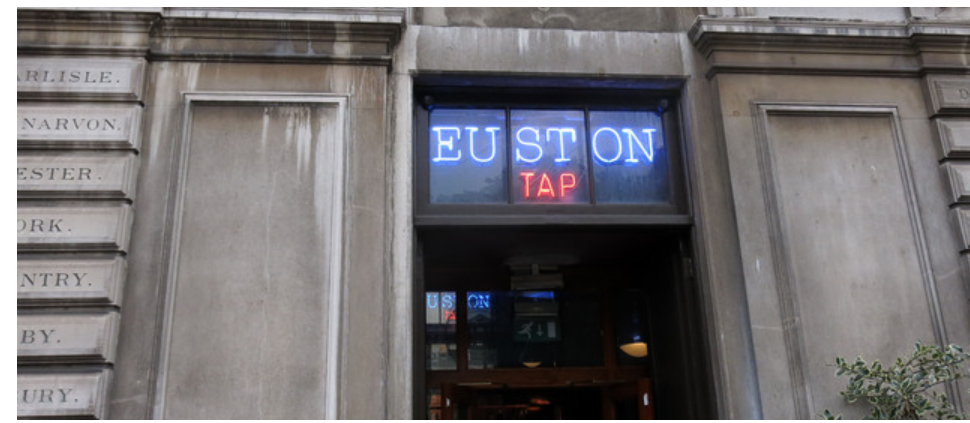Euston Station’s history is indeed intriguing
- September 10, 2024
Euston Station’s history is indeed intriguing, reflecting both the rise and the challenges of Britain's railway infrastructure. Originally opened in July 1837 as London's first intercity railway station, Euston, designed by Philip Hardwick, became a symbol of Victorian ambition. Its iconic entrance, the Euston Arch, stood as the world's largest Doric propylaeum, welcoming express trains to and from major cities like Birmingham, Manchester, Liverpool, Wales, and Scotland by the 1920s.
However, Euston's evolution mirrors the broader decline of British infrastructure. Between 1959 and 1977, the station underwent a complete modernisation, but not without controversy. In 1961, despite public outcry and the Royal Fine Art Commission's failure to intervene, the original station, including the Euston Arch, was demolished to make way for a modernist replacement.
Plans for another rebuild emerged in 2007, though they faltered until a new vision was announced in 2011. Amid these shifts, the engineers who were dismissed by UK rail ministers over safety concerns at London’s Euston Station highlight the ongoing struggles with infrastructure management in the UK, symbolizing deeper issues of mismanagement and neglect.
Interestingly, the station derives its name from Euston Hall in Suffolk, a detail often forgotten in the midst of its tumultuous history. The situation begs the question: where did it all go wrong? Drawing on previously unpublished archival material, an investigation into the planning and execution of Euston's many changes reveals the complexity of balancing progress with preservation in Britain's railway legacy.
- September 10, 2024
Euston Station’s history is indeed intriguing, reflecting both the rise and the challenges of Britain's railway infrastructure. Originally opened in July 1837 as London's first intercity railway station, Euston, designed by Philip Hardwick, became a symbol of Victorian ambition. Its iconic entrance, the Euston Arch, stood as the world's largest Doric propylaeum, welcoming express trains to and from major cities like Birmingham, Manchester, Liverpool, Wales, and Scotland by the 1920s.
However, Euston's evolution mirrors the broader decline of British infrastructure. Between 1959 and 1977, the station underwent a complete modernisation, but not without controversy. In 1961, despite public outcry and the Royal Fine Art Commission's failure to intervene, the original station, including the Euston Arch, was demolished to make way for a modernist replacement.
Plans for another rebuild emerged in 2007, though they faltered until a new vision was announced in 2011. Amid these shifts, the engineers who were dismissed by UK rail ministers over safety concerns at London’s Euston Station highlight the ongoing struggles with infrastructure management in the UK, symbolizing deeper issues of mismanagement and neglect.
Interestingly, the station derives its name from Euston Hall in Suffolk, a detail often forgotten in the midst of its tumultuous history. The situation begs the question: where did it all go wrong? Drawing on previously unpublished archival material, an investigation into the planning and execution of Euston's many changes reveals the complexity of balancing progress with preservation in Britain's railway legacy.
Euston Station’s history is indeed intriguing
- September 10, 2024
Euston Station’s history is indeed intriguing, reflecting both the rise and the challenges of Britain's railway infrastructure. Originally opened in July 1837 as London's first intercity railway station, Euston, designed by Philip Hardwick, became a symbol of Victorian ambition. Its iconic entrance, the Euston Arch, stood as the world's largest Doric propylaeum, welcoming express trains to and from major cities like Birmingham, Manchester, Liverpool, Wales, and Scotland by the 1920s.
However, Euston's evolution mirrors the broader decline of British infrastructure. Between 1959 and 1977, the station underwent a complete modernisation, but not without controversy. In 1961, despite public outcry and the Royal Fine Art Commission's failure to intervene, the original station, including the Euston Arch, was demolished to make way for a modernist replacement.
Plans for another rebuild emerged in 2007, though they faltered until a new vision was announced in 2011. Amid these shifts, the engineers who were dismissed by UK rail ministers over safety concerns at London’s Euston Station highlight the ongoing struggles with infrastructure management in the UK, symbolizing deeper issues of mismanagement and neglect.
Interestingly, the station derives its name from Euston Hall in Suffolk, a detail often forgotten in the midst of its tumultuous history. The situation begs the question: where did it all go wrong? Drawing on previously unpublished archival material, an investigation into the planning and execution of Euston's many changes reveals the complexity of balancing progress with preservation in Britain's railway legacy.
0 Commentaires
0 Parts
946 Vue







